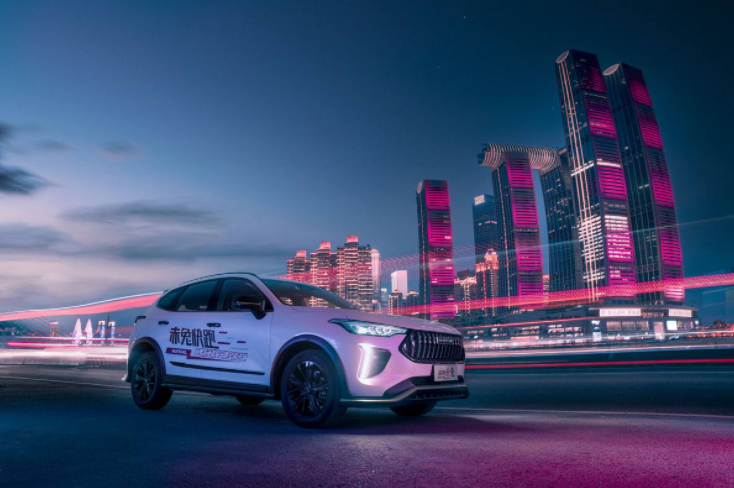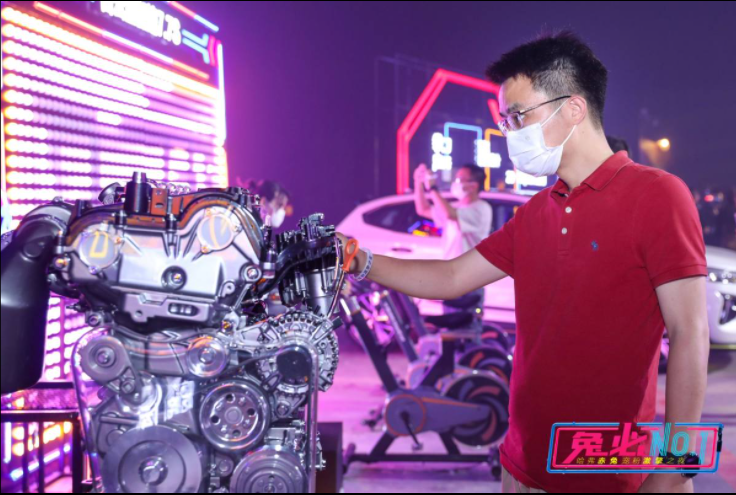Author: Big Eyes
Editor: Mr. Yu
What do you think is the aesthetic of youth?
For some, it’s a designed phone that costs over 10,000 yuan.
For others, it’s a branded T-shirt that costs only a hundred yuan.
For some, it’s a bottle opener and refrigerator magnet bought at the souvenir shop at the end of Route 66 on Santa Monica Beach.
But the standard for aesthetic quantification is not price, but whether one likes it or not.
Otherwise, in Tencent’s national-level game, Zhao Yun’s co-branded skin “Engine Heart” wouldn’t have set a record of 130 million on the first day of launch and 430 million before being discontinued.
Don’t make fun of it as an IQ tax. Discussions about whether it’s worth it depend on one’s financial situation. If they really like it, they will buy it regardless of the price.
The demands of the young market are often more diverse.
In understanding user needs, Great Wall Motors is playing a wild card.
Just look at the naming of the various colors for the Haval Chitu – Rampant Blue, Black, Buff Red, Cool Gray, and Flash White. The HEV model even has an exclusive color called “Energy Blue.”
Naming cars this way is not simply because these are popular words from gaming and anime cultures, but because Great Wall Motors is targeting a group that understands this “slang.”
This group accounts for approximately 19% of China’s population but contributes 40% to overall consumption. As their income and consumption levels increase, they are gradually becoming the driving force behind consumption growth.
The Haval Chitu is aimed at the new generation of consumers – the “Z generation,” ie. young people born between 1995 and 2009. This generation has been greatly influenced by the internet, instant messaging, smartphones, and social networks during their upbringing.
They are not blindly loyal to authority, seeking social acceptance and self-realization, and willing to pay for everything they like.
Trendy clothing, sneakers, blind box products, and creative cultural products… the Z generation is exhibiting unprecedented consumption vitality. Some industry insiders believe that experience-based consumption is replacing traditional consumption. Compared to the previous generations of 70s and 80s consumers, the Z generation is more focused on seeking new experiences and novel forms of play.
Don’t deny it so quickly. Who can guarantee they haven’t bought a few phone cases or keychains they like?
For their first car, many young prospective car owners also extend their consumption logic of emphasizing experience and aesthetics to their car purchase decisions: whether the design style is pleasing to the eye, whether the fuel consumption is relatively low, how the power performance is, and the degree of smart technology, etc.# Young and Robust: The Power Language of Haval Chitu
Putting effort into dressing up one’s QQ show image to stand out from the crowd was the social language of young people in the early 2010s. The pursuit of practicality by young consumer groups is no less important than the worship of appearance, and car companies are also trying to communicate with increasingly diverse consumer demands.
As a compact SUV that values experience, Haval has equipped the Chitu model with a jump-start function. The gearbox compresses the engine torque to its limit before erupting in a burst of acceleration, completing a racing-style start commonly seen in racing games on the Chitu without the expense of burning rubber.

By setting the driving mode to “sport mode” through the central control screen, turning off the ESP, and pressing the brake and accelerator to the floor, the dashboard will display the words “jump mode” when the rpm reaches the optimal starting speed. Momentarily lift your foot off the brake and be prepared for the supercar-style push-back sensation brought by power and acceleration. It is difficult to say whether the scene that comes to mind for the person sitting in the driver’s seat at that moment is a professional racetrack waiting for the start or a jet taking off from an aircraft carrier’s deck.
As various manufacturers in various fields gradually improve their understanding of the concept of experience, many technology indicators and functions that were once considered representatively hardcore are increasingly appearing in consumer-level products.

As the power core, the all-new GW4B15C high-power engine makes the dashboard parameters of the Haval Chitu model impossible to ignore among vehicles of the same level. The engine adopts Miller cycle technology, and the CVVL continuously variable valve lift technology makes it easier to control the intake volume under the same working stroke. Official data shows that the fuel consumption of the fuel version of the Haval Chitu is controlled at around 6.2L per 100 kilometers, and the fuel consumption of the DHT hybrid version is even lower, at 4.6L. Considering the driving habits of young people, the performance of Chitu in terms of energy efficiency is worth expecting.
Compared to the previous 1.5T engine, the power has been increased by 11 kW, and the 1.5T peak torque has reached 275 Nm. The official data shows a high thermal efficiency of up to 38%, a high compression ratio of 11:1, and a 7-speed dual-clutch transmission, bringing the power level of 7.7 seconds zero to 100 km/h acceleration data to the Haval Chitu.
The appearance of such a powerful performance level on a compact SUV model at the 100,000-120,000 yuan level has, to some extent, demonstrated that the Haval brand is understanding the demands of young consumer groups.
Absolutely Youthful Design Language# Haval’s Design Language: A Fusion of Technology and Science Fiction
The Haval brand has given many cool names to the design elements of the Chitu, such as the electric music soundstream grille, the penetrating tail light, and the mech-blade waistline.
If the 5D gear, spatiotemporal interactive touch screen, and sci-fi-centric cockpit design are the visual design language of the Chitu, then the shift paddles, a hardware component commonly found in race car cockpits, are apparently intended to lead Haval’s Chitu towards more cutting-edge and sci-fi-styled directions in terms of hardware-operated driving experience.
This also makes it easier to understand why the Haval Chitu’s design language is so reminiscent of video games, and why the HUD head-up display does not seem out of place in the cockpit.
In the 1980s, when people imagined the cockpit of the future, it was full of mechanical buttons, digital instruments, and screens displaying numbers in black and green. Today, we can see that automotive interaction designers around the world have spent a lot of time thinking about how to consider and implement more for drivers.
Thanks to the increasingly mature Lemon platform of Great Wall Motors, and the more detailed functions and artificial intelligence applications, the iterative evolution of the experience can be realized through a full-vehicle over-the-air upgrade (FOTA).
If lane departure warning, lane departure assistance, automatic emergency braking, and full-speed adaptive cruising in different environments are the basic skills for L2 level autonomous driving, fully automatic parking, facial recognition systems, and remote in-car monitoring represent considerations of more scenarios and demands.
Perhaps considering China’s relatively complex road traffic environment, Great Wall’s product managers and engineers have also included pedestrian safety assistance, bicycle safety assistance, and even door-opening warnings in the Haval Chitu’s intelligent family. We can see that the maximum guarantee of passengers’ safety is generally through more straightforward means.
We can see that the other side of integrated internal and external application of intelligence is the conversion of intelligence into visible, tangible, and usable practical applications.
In conclusion, through the Haval Chitu, we can see the thoughts behind the products of Great Wall Motors. As marketing guru Scott Robinette said: “Only by continuously producing products that truly meet customers’ needs can a company win customers’ praise.”However, one thing is certain – a younger design language is not just about bright new colors for a few new models.
It’s a well-known fact that brand saturation and design homogenization are rampant in today’s consumer market. Great Wall is currently communicating with a more diverse consumer base to understand their “true needs”, and is doing so through the delivery of products.
While the entire business environment is trying to woo younger consumers through marketing, Great Wall is already attempting to create youthfulness itself.
This article is a translation by ChatGPT of a Chinese report from 42HOW. If you have any questions about it, please email bd@42how.com.
